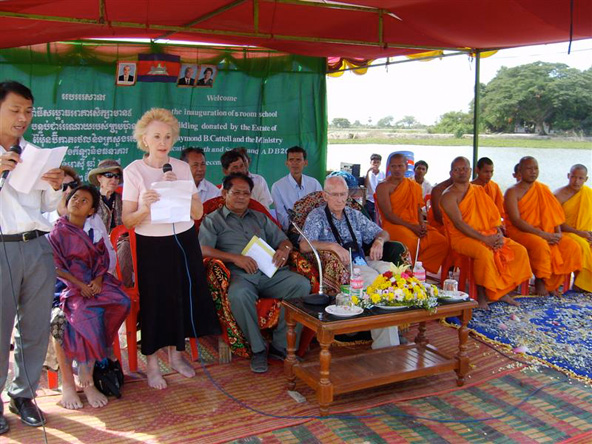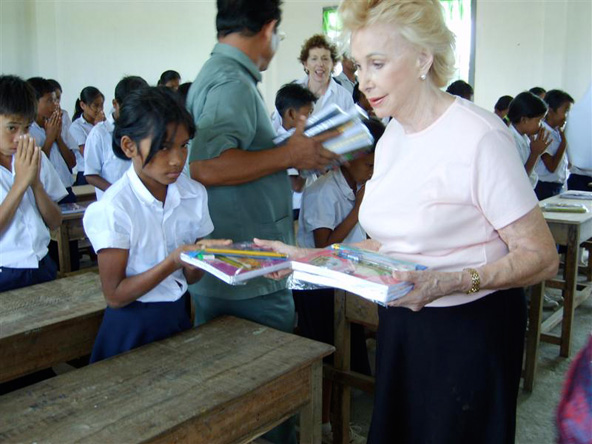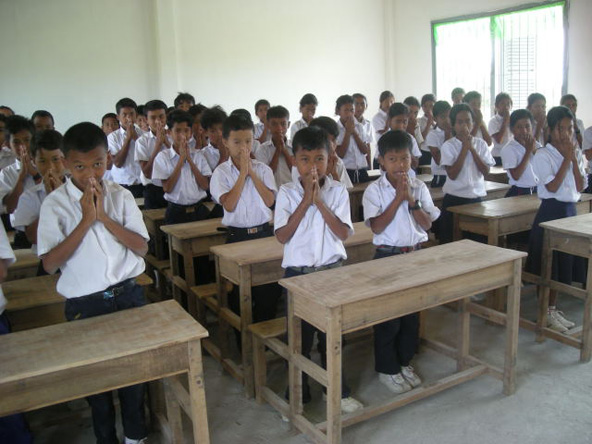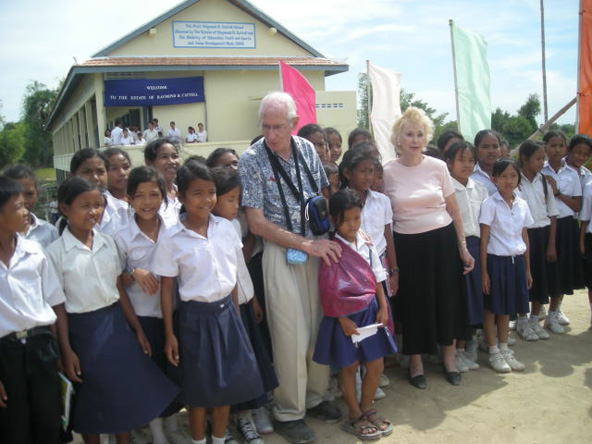A LEGACY OF EDUCATION
The Professor Raymond B. Cattell School
in Cambodia
After a
life devoted to education and research, Raymond B. Cattell
left a trust to help people facing poor or non-existent
opportunities for education.
Growing up in England during World War I, he anticipated the need to “think globally.” After much consideration, Cambodia, because of its crushing poverty resulting in large part from its lack of an educated class, was chosen to develop a school for children. Cambodia’s educational infrastructure was destroyed in the 1970's by the Khmer Rouge regime, portrayed in the movie about ”the Killing Fields.” Under the direction of the ruthless Pol Pot, the Khmer Rouge used every means possible to return Cambodia into an agrarian society by forcing city dwellers into isolated labor camps, relocating villagers, separating children from their parents, destroying commerce, and routinely executing scientists, physicians and other professionals. Only the few who could hide their credentials survived; merely wearing glasses indicated that a person could probably read and resulted in an automatic death sentence. An estimated 90% of teachers were executed and most schools destroyed or turned into torture chambers.
Cambodia’s future recovery and progress depends in large part on educating its children. The majority of Cambodian children live at a poverty level in remote rural areas. Their homes are without electricity or running water. For some, even a mosquito net to protect against malaria is a luxury. There are not enough schools to provide basic education. Many parents and certainly all the grandparents are survivors of the Khmer Rouge regime, and as a result cannot read or write. They are eager to see that children have the opportunities that they missed. Typically their enthusiasm is passed on to the children who feel privileged to be able to go to school, which was manifested in the attitude of the students at the opening of the Professor Raymond B. Cattell School.
The following photographs were taken at the opening of the Raymond B. Cattell School on December 12 2007. The school is located in a primitive village called Vilhear Sour Chung in Kandall Province which is about a three hour drive and barge trip northeast of Cambodia’s capital Phnom Penh.

Growing up in England during World War I, he anticipated the need to “think globally.” After much consideration, Cambodia, because of its crushing poverty resulting in large part from its lack of an educated class, was chosen to develop a school for children. Cambodia’s educational infrastructure was destroyed in the 1970's by the Khmer Rouge regime, portrayed in the movie about ”the Killing Fields.” Under the direction of the ruthless Pol Pot, the Khmer Rouge used every means possible to return Cambodia into an agrarian society by forcing city dwellers into isolated labor camps, relocating villagers, separating children from their parents, destroying commerce, and routinely executing scientists, physicians and other professionals. Only the few who could hide their credentials survived; merely wearing glasses indicated that a person could probably read and resulted in an automatic death sentence. An estimated 90% of teachers were executed and most schools destroyed or turned into torture chambers.
Cambodia’s future recovery and progress depends in large part on educating its children. The majority of Cambodian children live at a poverty level in remote rural areas. Their homes are without electricity or running water. For some, even a mosquito net to protect against malaria is a luxury. There are not enough schools to provide basic education. Many parents and certainly all the grandparents are survivors of the Khmer Rouge regime, and as a result cannot read or write. They are eager to see that children have the opportunities that they missed. Typically their enthusiasm is passed on to the children who feel privileged to be able to go to school, which was manifested in the attitude of the students at the opening of the Professor Raymond B. Cattell School.
The following photographs were taken at the opening of the Raymond B. Cattell School on December 12 2007. The school is located in a primitive village called Vilhear Sour Chung in Kandall Province which is about a three hour drive and barge trip northeast of Cambodia’s capital Phnom Penh.

As the sign
indicates, the building is named the Professor Raymond B.
Cattell School. The construction costs of the building
were funded by the Raymond B. Cattell estate with matching
funds from the Asian Development Bank and support from the
Ministry of Education, Youth and Sports.
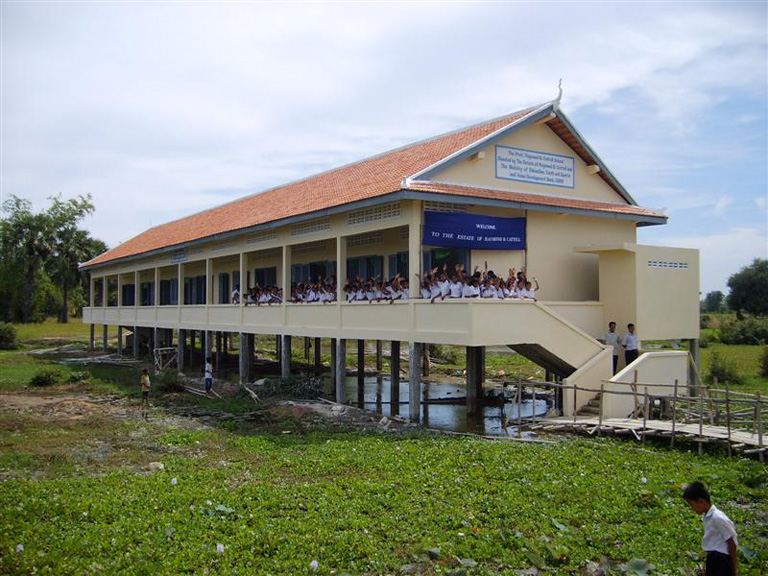
The school is a concrete structure. It has four classrooms, a library, and a computer room. It serves three villages and is attended by 260 students ranging in age from seven to eleven years of age. The land was donated by local monks and after its dedication, the school was given to the community and has become a source of great pride. Funds from the estate will coverall all but basic operating expenses.

The school is a concrete structure. It has four classrooms, a library, and a computer room. It serves three villages and is attended by 260 students ranging in age from seven to eleven years of age. The land was donated by local monks and after its dedication, the school was given to the community and has become a source of great pride. Funds from the estate will coverall all but basic operating expenses.

Shown here is a street scene of Vilhear Sour Chung, also typical of the other two villages where the students live. Life consists of living at a subsistence level in one or two room, roughly built, wooden homes. Two or three generations crowd into these homes, with their water buffalos if they are lucky enough to have one. “Wealthy” families may own a bike or motor bike.
